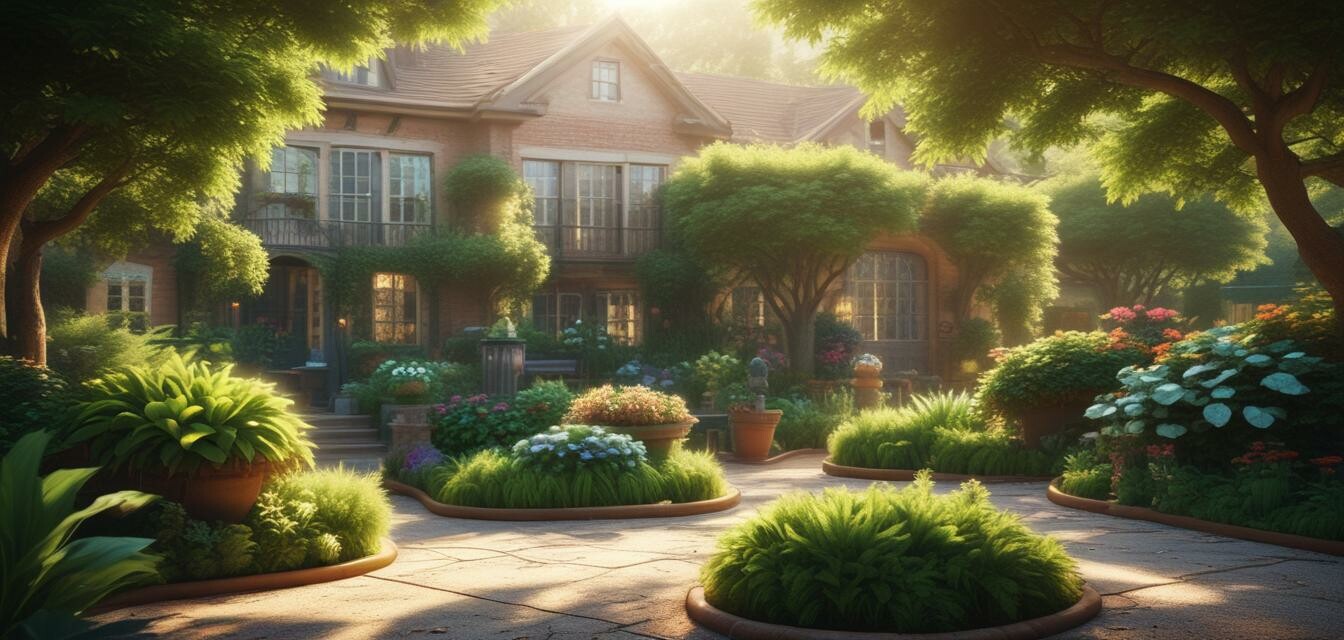
Creating a Smart Garden in 2025
Key Takeaways
- Smart gardens use technology to optimize care and increase yield.
- Automation saves time and labor, allowing for more efficient management.
- Integrating sensors helps monitor soil health and environmental conditions.
- Smart watering solutions conserve water while ensuring plants thrive.
- 2025 brings an array of innovative technologies for gardening enthusiasts.
The modern garden is evolving with innovative technologies designed to enhance growth and reduce effort. By incorporating smart gardening solutions, you can create a garden that thrives with minimal intervention. In this article, we’ll explore the latest advancements in gardening technology for 2025, ensuring your garden stays lush and productive.
The Rise of Smart Gardening
Smart gardening is not just a trend; it's the future. As technology continues to advance, so does the way we approach gardening. By harnessing the power of automation, connectivity, and data, you can cultivate a vibrant garden with greater efficiency. From sensor-driven irrigation systems to app-controlled greenhouse management, smart gardening has it all.
What is a Smart Garden?
A smart garden utilizes technology to streamline gardening tasks, monitor conditions, and enhance plant care. Here’s how it works:
- Remote Monitoring: Use apps to check plant health and soil conditions from anywhere.
- Automated Watering: Set up schedules or use sensors to water plants only as needed.
- Environmental Sensors: Track temperature, humidity, and light levels for optimal growth.
Benefits of a Smart Garden
Pros
- Reduces manual tasks and saves time.
- Enhances plant health through optimal care.
- Increases yield by providing ideal conditions.
- Conserves water and energy with smart solutions.
Cons
- Initial setup costs can be high.
- Requires familiarity with technology.
- Potential maintenance for electronic devices.
Essential Smart Gardening Technologies for 2025
1. Automated Irrigation Systems
Automated watering solutions are one of the most important components of smart gardening. These systems can be programmed to water specific areas of your garden based on plant needs, which saves both water and time:
| System Type | Description | Benefits |
|---|---|---|
| Drip Irrigation | Delivers water directly to the roots. | Reduces water waste, promotes root growth. |
| Sprinkler Systems | Automated sprinklers cover larger areas. | Ideal for lawns or diverse garden layouts. |
| Soil Moisture Sensors | Detects moisture levels in the soil. | Water only when necessary. |
2. Environmental Sensors
Environmental sensors monitor various aspects of plant care. The information gathered will help you make informed decisions about your gardening routine:
- Temperature Sensors: Track heat levels in the garden.
- Humidity Sensors: Monitor moisture levels in the air and soil.
- Light Sensors: Measure sunlight exposure to optimize plant placement.
3. Smart Plant Monitor Systems
With smart plant monitors, you can track the health of your plants in real-time:
- Measure soil pH and nutrient levels.
- Use apps to receive alerts when conditions change.
- Retrieve tailored care tips based on plant types.
4. Gardening Apps
Leverage technology with gardening applications designed to provide useful data and care reminders:
- Plant Care Trackers: Log watering and fertilization schedules.
- Community Features: Share successes and experiments with fellow gardeners.
- Virtual Garden Planners: Design your garden layout using AR technology.
Sustainability in Smart Gardening
Incorporating sustainability into your smart garden not only benefits the environment but also improves your garden's efficiency:
- Composting Sensors: Optimize your composting process with data on temperature and moisture.
- Rainwater Harvesting: Collect and utilize rainwater with smart siphoning systems.
- Native Planting Guides: Choose plants that are well-suited to your local climate.
Challenges to Consider
While smart gardening offers numerous advantages, there are challenges to keep in mind:
- Initial investment can be significant.
- Technology can malfunction or require updates.
- Not all plants are compatible with automated solutions.
Conclusion
Creating a smart garden in 2025 opens up endless possibilities for gardening enthusiasts. With the right tools and technology, you can experience a garden that's easier to maintain, more efficient, and environmentally friendly. Whether embracing automation or utilizing smart monitoring solutions, the journey towards smart gardening is one of growth, learning, and ultimately, a thriving outdoor oasis.
Ready to jumpstart your smart gardening journey? Discover more about advanced gardening technology and create a future-proof garden today. Explore additional insights in our related articles, such as Smart home decor buying guides and Smart home trends and innovations.